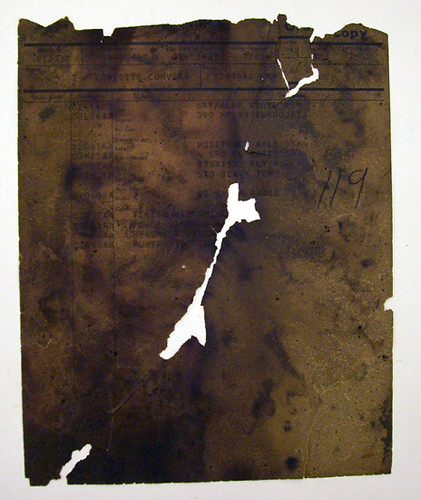
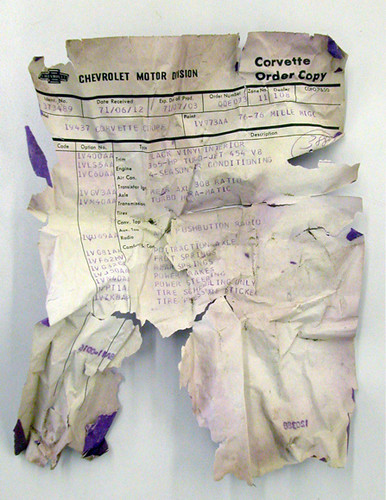
Original order forms for 1967 Corvette convertible on left and 1971 Corvette coup on right.
A private client who collects vintage Corvettes was interested in conserving two original order forms for cars he had recently purchased. The paperwork for each car had been badly handled and poorly stored. In fact, the document on the left had been found hidden within the car mechanics, where it suffered greatly from exposure to exhaust and oil residue. Both documents were so severely dessicated and brittle, they couldn't be handled without causing more fragments from breaking off.
"Original paperwork is extremely important, as it can establish how the car was ordered new, where the car was originally sold, and how the car was originally equipped. These are absolutely critical components to determining the provenance and value of a vintage Corvette." -Steve Davis, President of Barrett-Jackson Auctions, from VetteWeb.comDue to the importance of these documents to their respective cars, our client was very eager for the stabilization of the documents which would allow for the safe viewing and handling of the information which was currently obscured by all the damage.
We started by tackling the '67 convertible paperwork to attempt the reduction of the heavy dirt layer and extensive staining due to residual grease and oil present overall.
 Our aqueous tests were initially unsuccessful due to the amount of grease and oil present in the document. The picture above shows how the grease and oil are preventing the absorption of water into the paper which is necessary to stabilize the fibers.
Our aqueous tests were initially unsuccessful due to the amount of grease and oil present in the document. The picture above shows how the grease and oil are preventing the absorption of water into the paper which is necessary to stabilize the fibers.
Through a series of organic solvent tests, we were able to come up with a solution which would act as a type of degreaser. With the delicate application of the solution to the item with a pipette on a suction table, we were able to greatly reduce the dark staining from the oil and exhaust residue.
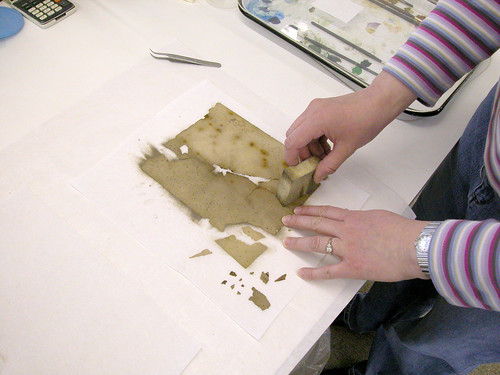
After the solvent treatments, we were then able to further reduce the exhaust residue and other surface dirt through various dry cleaning methods including the use of a dry cleaning sponge as demonstrated above and below.
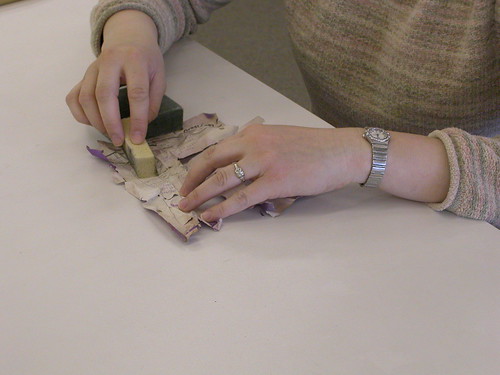
At this point, we could begin treating the documents in tandem. The convertible document needed to be dry cleaned delicately because the brittle paper was prone to further tearing and fragmentation (above).

The large amount of overall damage to the documents required an overall lining to a Japanese tissue using wheat starch paste to repair tears, reinforce creases and stabilize the weak fibers of the paper.
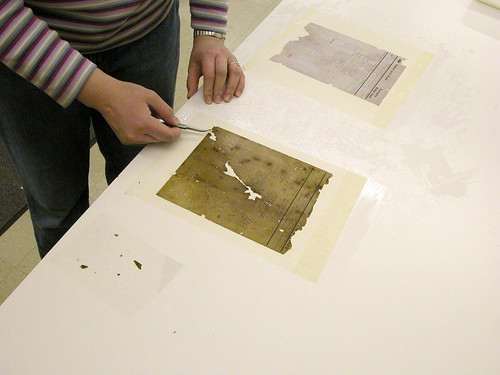
The small fragments were then hand placed with tweezers, and paper losses were filled using a matching liquid paper pulp to give a seamless appearance to the documents. The documents were then placed in a press to flatten between wool felts. Once flattened, the paper losses filled with liquid paper pulp were toned using colored pencils and watercolor to match the surrounding paper. The documents were now fully stabilized and complete.
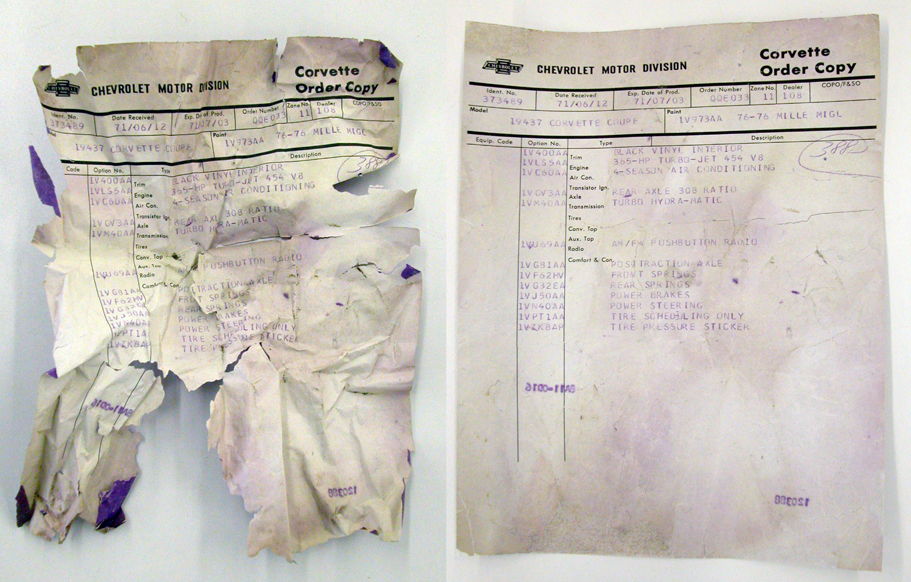
Before and after images of the original order form of a 1971 Corvette convertible

Before and after images of the original order form of a 1967 Corvette coup.
The results speak for themselves. The documents are now much stronger and can be handled safely ensuring the access to their important information as proof of provenance for these valuable classic cars.
Check out other before and after treatment images from our many other projects!




No comments:
Post a Comment